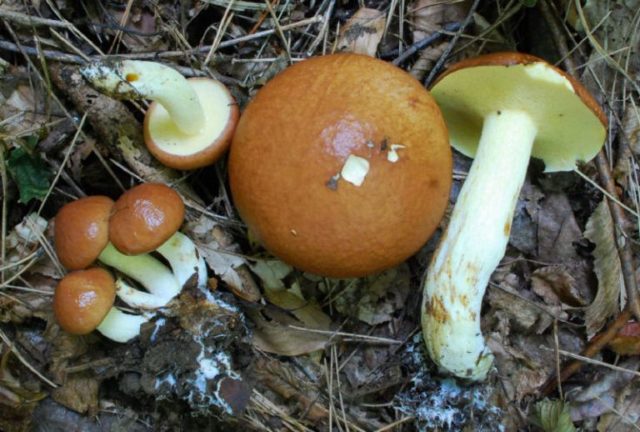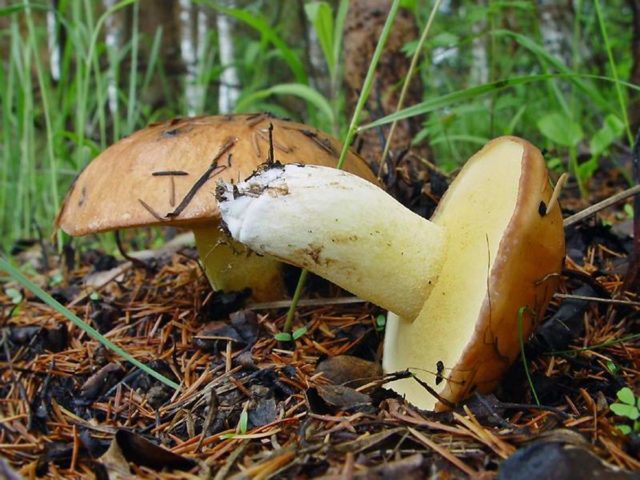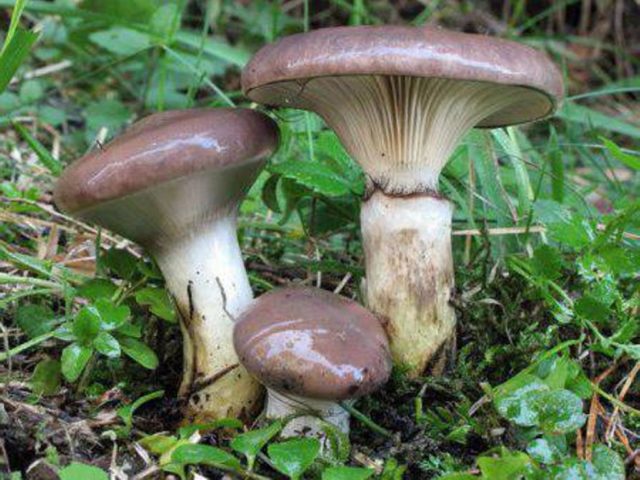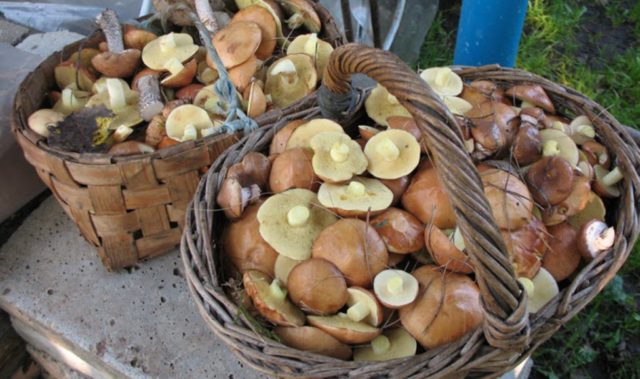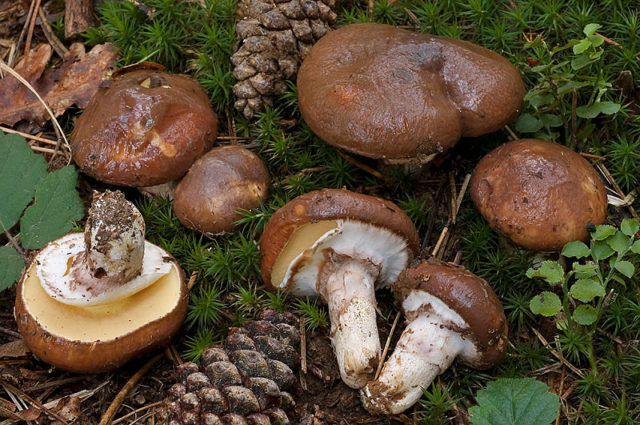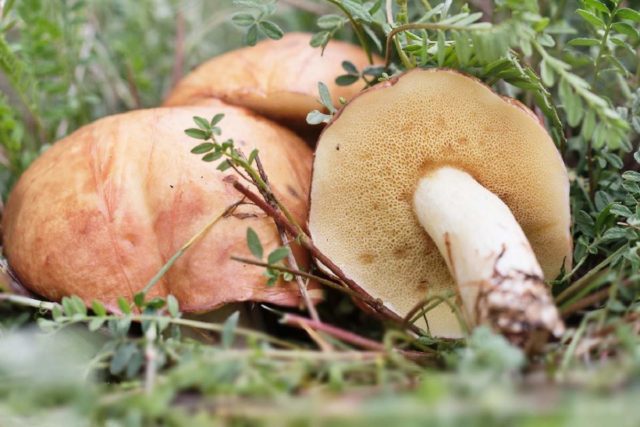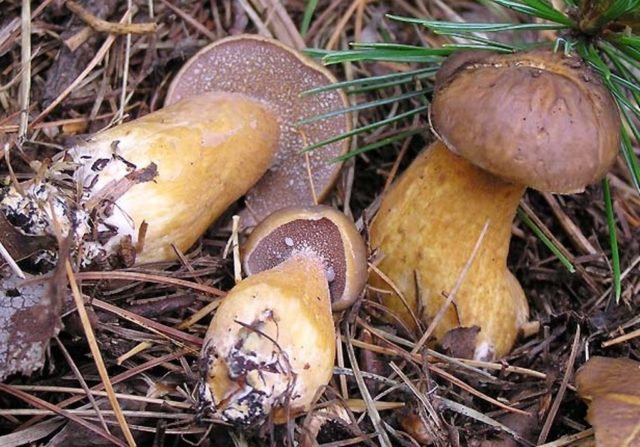Content
For many mushroom pickers, oiler is considered the best mushroom; it is often compared to boletus or white. Butterlets come in many varieties, so they can be harvested from mid-June to mid-September. The earliest is considered a granular oiler or summer. When going to the forest, in order not to make a mistake when collecting and not to collect inedible butter, you must carefully study the description, view photos and videos.
Detailed description of a granular oiler
Granular oiler is a tubular mushroom of the Boletovye family, of the Oiler genus. People often call it an early or summer oilcan, since the first specimens begin to appear at the beginning of summer. During mushroom hunting, it is better to take young mushrooms, since the granular butter dish is to the liking of insects and their larvae.
Description of the hat
The grainy appearance forms a cap ranging in size from 10 mm to 20 cm. In young specimens, the cap is small, hemispherical or plano-convex. When ripe, it becomes flat, and the edges are bent upward. The surface is flat, smooth, covered with a dense mucous film, which is recommended to be removed when cleaning. The color of the cap can be orange-brown, red-rusty, red-brown. The hat has a dense, fleshy and aromatic flesh of a snow-white yellow color. On the cut, the color of the pulp does not change.
If you look at it from below, you can see a tubular layer of light yellow color. When pressed on it, a milky juice appears, which, when dried, acquires a brown color.
Leg description
The stem is dense, fleshy and fibrous. The length is about 8 cm, the diameter is 2 cm. Compared to the large cap, the stem looks rather short. The upper scales are snow-white with numerous small granular growths. To the bottom, the color smoothly passes from light yellow to lemon brown.
Going on a mushroom hunt for a summer butterdish, you must read the description and view the photo.
Edible granular oiler or not
Granular oiler is an edible species. It is ideal for salting, marinating, stewing and frying. Summer butter dish is rarely dried, as it crumbles during heat treatment. But thanks to this property, mushroom powder is used to make mashed potatoes and sauces.
When collecting a granular species, one must not forget that there are false specimens in nature. The conditionally edible mushroom has a bitter taste, unpleasant odor and can cause intestinal upset. In order not to harm the body, you need to have an idea of the appearance of a false oiler: the cap is convex or flat, painted in a dark purple color, the surface is shiny and slimy.Instead of a tubular layer, gray-white plates are located under the cap.
Where and how does a granular oiler grow
The grainy species prefers to grow among young pines, in open sunny areas, in low grass or needles. The variety can be found in the European part of Russia, in the Far East, in the Urals, in Siberia, in the Caucasus. Summer boletus grow in groups and singly. Depending on the region of growth, the first specimens appear at the end of May and continue to grow in waves until the beginning of September.
Going on a mushroom hunt, you must follow simple recommendations:
- The collection should be carried out far from the highway, factories and factories, filling stations.
- It is better to take young specimens.
- If you find one granular oiler, you need to look around, since these mushrooms grow in families.
- In order not to damage the mycelium, the young are cut with a sharp knife.
- During cleaning, the mucous membrane must be removed, since when preserved, the unpeeled mushroom will give the marinade a dark color.
- The harvested crop should not be soaked in water, because the fleshy, tubular pulp absorbs water like a sponge. They are quickly washed under running cold water.
- The mushrooms brought from the forest are cleaned and boiled immediately, otherwise one wormy mushroom will quickly infect the whole basket.
Edible doubles of a granular oiler and their differences
The granular species has twins in nature. They are edible and differ from each other in appearance.
- Late or common Is the most common variety. It prefers to grow among conifers, in sandy glades and along the road. A hat with a diameter of up to 10 cm is hemispherical and flat. The red-brown cap is shiny, covered with a slimy film that can be easily removed when cleaning. The tubular layer is covered by a dense film, which turns into a ring with the age of the fungus and descends onto the stem.
- Oiler red - the mushroom has a small height, a dense fibrous stem and a red-red cap with a shiny, slimy surface. It prefers to grow under larch and other conifers. The time for collecting red boletus coincides with the flowering of the pine. The second layer appears at the same time as the lime flowers. It grows in groups, so the collection is quick and convenient.
- Cedar - prefers to grow next to a five-coniferous pine. The hat with a diameter of 10 cm is painted in burgundy color. In rainy weather, it becomes covered with mucus, when dry it becomes waxy and fibrous. The pulp is fleshy, with a fruity-almond aroma and a sour taste. This species is often found in Siberia and the Far East, in coniferous and cedar groves.
- Un-ringed - the species has a light lemon cylindrical stem and a hemispherical red-brown cap with a diameter of up to 12 cm. Light yellow pulp is dense, fleshy, fibrous, does not change color when cut. The non-ringed species has a pleasant taste and smell, the overgrown specimens have an unexpressed taste and an unpleasant, sour smell.
How to cook granular butter
The grainy appearance has a good taste and aroma. Therefore, it is used stewed, fried, pickled and salted.
Salted boletus
This recipe is perfect for boiled or fried potatoes.
For cooking you will need:
- mushrooms - 1 kg;
- sugar - 2 tbsp. l .;
- salt - 40 g;
- allspice, bay leaf, cloves - to taste.
Preparation:
- Mushrooms are washed and peeled from the film.
- Pour into a saucepan, pour water and boil for 20-30 minutes.
- Add salt, sugar and spices and cook for another 5 minutes.
- The mushrooms are laid out in sterile jars and filled with salt brine.
- After cooling, they are removed to a cool room.
Pickled granular butter
Pickled mushrooms are an ideal snack and go well with potatoes and meat dishes. Small pieces are fine for this recipe.
Required Ingredients:
- boiled mushrooms - 4 kg;
- sugar and salt - 1 tsp each;
- spices to taste;
- vinegar - 3 tsp.
Preparation of granular oils:
- Boil water in a saucepan and add all the ingredients, except for butter.
- At the end of cooking, add vinegar.
- Mushrooms are laid out in sterile jars and filled with hot brine.
- The jars are closed and left at room temperature until they cool completely.
Conclusion
Granular butterflies are tasty and aromatic mushrooms that appear in Russian forests from the first half of June to mid-September. Due to the high content of protein, vitamins and trace elements, they are often harvested for the winter and eaten stewed and fried. Mushrooms are considered a heavy food, so they are not recommended for people with gastrointestinal diseases.
